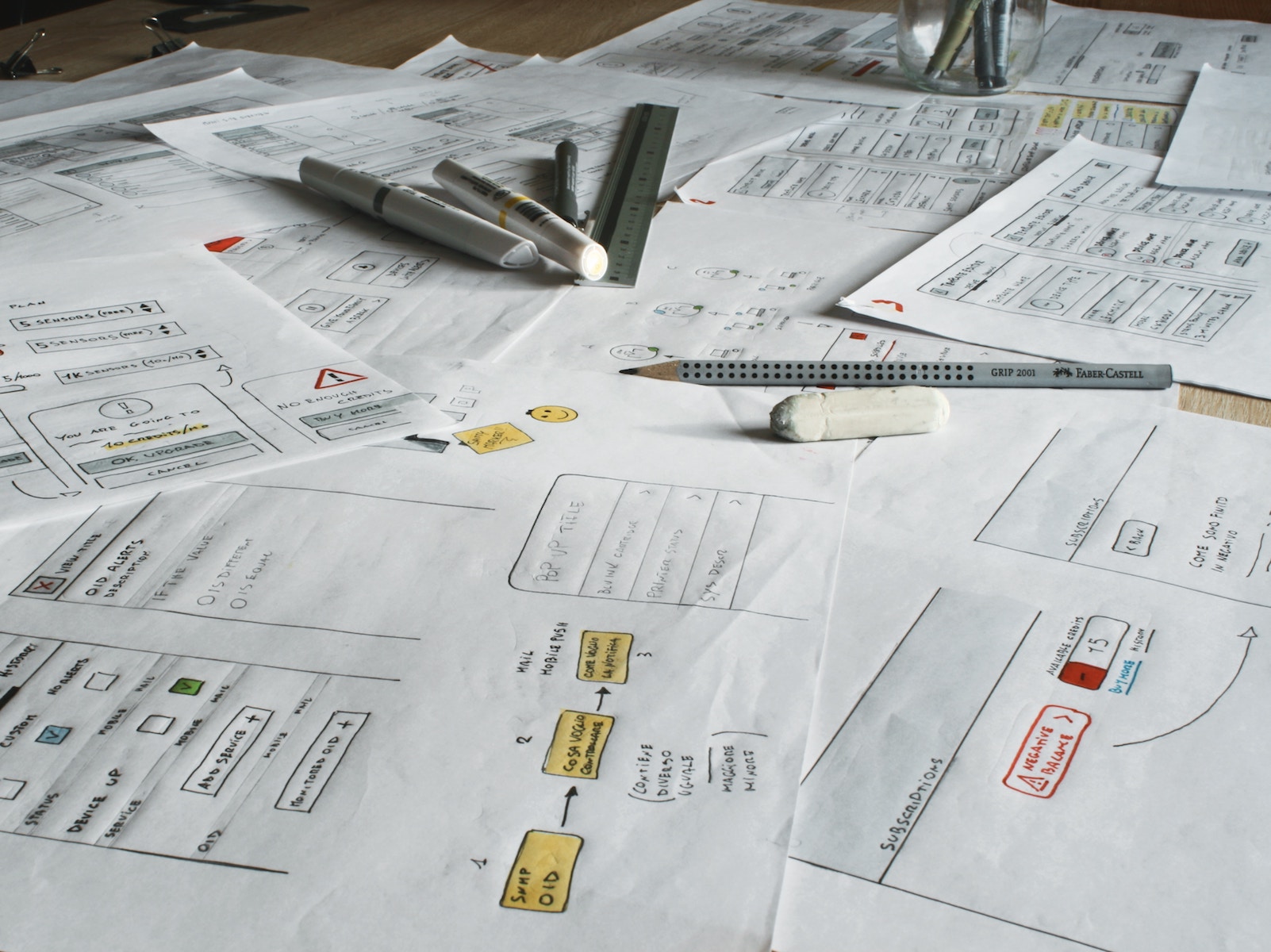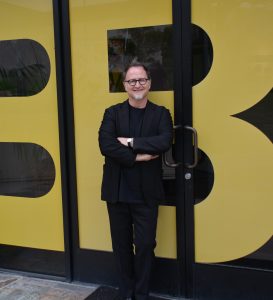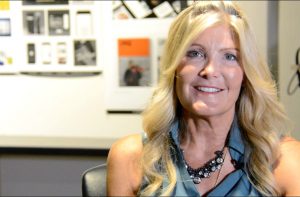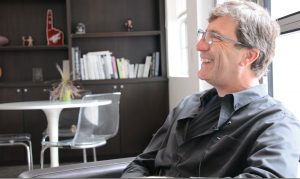
All current definitions aside, many would argue that branding was originally defined by design — the design and deployment of visual identifiers that established ownership, authenticity, and trustworthiness. But that was then; this is now — and now, branding and the designers that serve it must rise to an ever-growing and changing array of cultural, technological, and marketplace challenges.
We’ve previously engaged international leaders like Bryony Gomez-Palacio of UnderConsideration and Justus Oehler of Pentagram to address the current state of design as a practice in The New Power of Brand Design – Branding Roundtable No. 19. Now we’re going to look forward, not only at what brand design will require in the future but, even more so, how the industry will need to “build” brand designers to meet tomorrow’s needs.
We asked one of those designers of the future, Rebecca Kent (a student at LCAD, the Laguna College of Art and Design, and, yes, this contributing editor’s daughter) to interview design leaders from four sectors: brand marketers, B2C agencies, B2B agencies, and design academia. We spoke with:
- Christopher Ayres, Creative Director, Taco Bell headquarters
- Michael Dula, Founding Partner, Chief Creative Officer, BrandingBusiness
- Catharin Eure, Dean of Innovation, Chair of the Design and Digital Media program at LCAD
(Laguna College of Art & Design) - Sig Gross, Managing Director, Chief Creative Officer and Principal, 160over90
This video will give the briefest of introductions into a multi-faceted discussion, and we encourage you to watch it and then read the full interview below.
Q: People often think of brand design as only graphic design, but what do you see as a range of skills a good designer needs to have?
 Christopher Ayres, Taco Bell: Curiosity and empathy.
Christopher Ayres, Taco Bell: Curiosity and empathy.
Design, for me, has never been about how something physically looks. That’s part of it, of course, but it should also be about how it makes you feel, how you interact with it, and all the other tiniest of details. It’s an art form, a skill, a work-in-progress, in every sense of the word.
So a designer should really follow their interests and questions. If you’re an art lover who is wowed by visually arresting images around you, graphic design can be a viable path forward, sure, but that same person could also be a huge nerd — like me — who is constantly wondering things like, “Why do I need to input my ZIP Code and still select my state from a dropdown?!” It’s such a small detail, but if your brain is hardwired to wonder how to improve mundane tasks, User Experience could be equally, if not more, fulfilling.
They’re both under the umbrella of design, so I don’t feel like there are requisite ranges of skills that one must have. But if you explore what fascinates you, and you can also understand how those things make people feel during interactions, you’ll hit the sweet spot of being a truly interdisciplinary designer. The amazing thing is that the world around us is constantly changing, so as long as you maintain that curiosity and empathetic spirit, you’ll always be learning and growing and expanding your range of skills.
Michael Dula, Branding Business: A designer today has to be somebody who thinks in terms of systems. Being a brand designer is very complicated. You have to envision how a brand can come together and how people can experience that brand on multiple levels, whether it is in print, digital, film, the moving image, virtual reality, or environmental design.
It takes a very special person who can actually imagine how that branded experience can take place, how it can be distinct, and how it can be thoroughly experienced across the board. It’s very, very challenging task. It’s multi-brained.
Catharin Eure, LCAD: As Dean of Innovation, and also Chair of Design, my job is to constantly ask on behalf of students, “What will the world look like in four years?” and “How will designers fit into that world?” — because designers are really important.
It’s not enough for a school educating the next generation of designers to say, “Choose graphic design,” which I see as print and package, or brand design. Or to make them choose a specialty, as many do. “Choose motion. Or video. Or user experience.” And now students are being asked to choose between augmented reality and virtual reality.
They need to learn broadly. Yes, it’s still important to acquire a core understanding of brand and packaging and print design skills — but also, from the very start, learn motion graphics and video and user experience, 2D and 3D. They need to be able to conceptualize into the future, into the Internet of Things, and to use technology that’s not even here yet.
Sig Gross, 160over90: As we’re all about solving big business problems for our clients, when it comes to design, it’s not just making pretty things. It’s really about developing big ideas based in strategy, based in problem-solving for our clients. The required skills are quite broad, and there are a lot of agencies that hire very specific designers in the digital realm, in the print realm, in the video realm, what have you. But here, the way we judge talent is to ask, “Are you good at a lot of things?”
Q: “Design thinking” is a big buzz word, right now. As design takes on a more strategic role, how much does an individual designer have to be both left-brain and right-brain?
 Michael Dula, BrandingBusiness:It’s always imperative that great designers think with the left and the right brain.
Michael Dula, BrandingBusiness:It’s always imperative that great designers think with the left and the right brain.
After all, a brand is built with strategy in mind, that’s the basis, that’s the inside of the cake if you will. Brand design allows you to actually bring strategy to life — you’re able to visualize it. But you’re always following brand strategy. That means you’re constantly thinking about analytical strategy, visual design aesthetics, application, how it’s all experienced. None can be done without the others.
Catharin Eure, LCAD: I actually think it’s funny that design thinking is a buzz word. In the business side of my life, the first thing I start on with clients is thinking, then design. I always say “First comes insight, next comes understanding, then innovation.” And all of that is design thinking.
And it’s super important, because what’s going to happen in the future is not about “solid” things. It’s about service industry, about conceptual thinking, and it’s about digital environments in which the thought process — how you’re having someone tell a story — is crucial. In the past, you could get away with just making things stationary, such as a billboard. That’s no longer going to be the case. Not for anybody in our school, and certainly not in my business and with my clients. That’s why I always say, “Think first, then design.”
So I believe the crux of elevating design is thinking, and that schools need to teach more thinking. I know we do.
Sig Gross, 160over90: Design thinking is key. If you look at the 15 years we’ve been in business, our creative process has always been to have creative team members who are involved right from the research discovery phase. They’re interviewing, and we’re all interviewing, those stakeholders at a company or an institution. So designers are involved all the way through strategy development into creative development. For us that process has been in place from day one, so that type of thinking, I think, is critical — because big ideas turn into big solutions, which end up supplying amazing results.
Christopher Ayres, Taco Bell: Designers are problem solvers, not merely artists or strategists, which is the whole right-brain, left-brain conundrum.
There’s definitely some connective tissue from the previous question. It’s a matter of what interests you and what fuels that inquisitive spirit. I know some artists who aren’t spectacular on strategic thinking, but they’re incredible craftsmen and makers of things (and the other way around, too). Find your passion, find your purpose, which could mean being a brilliant painter, if you want. But to be a strong designer, you’re really being a problem solver, and that will always require a well-rounded approach.
Here at Taco Bell, it’s really benefited my crew to think through multiple angles of solutions for a project or brief. Again, we’re doing problem solving more than straight-up visual design. Nice design — that looks dope, sure, but is it meeting the key objectives? And are we taking into consideration the consumer insights, and challenges of the marketplace? And are you applying your color theory understanding from art school, and the physiological underpinnings of how this makes people feel relative to what you ultimately want your audience to do? Oh, and by the way, create something original and beautiful and delicious and effortlessly cool and tie it up in a nice bow to have ready to ship by tomorrow.
It’s a tall order, but the journey to figuring out those solutions is the fun part for me. I find satisfaction in the doing, sometimes, much more than in the final product. Find the fun and the left and right brain stuff will work itself out. And if you still struggle with that internal tug-of-war, find a partner or a strategic brain to bounce ideas off of. Problem solving is ultimately collaborative. One person, creative genius or not, can’t do it all alone.
Q: How do you think emerging technologies, such as VR and AI, will impact a brand designer’s job?
 Catherine Eure, LCAD: There are two considerations here. On the technical side, designers are going to have to understand that the design decisions they make in new technologies can have physical effects. Take VR: if you don’t understand spatial audio, you can actually cause motion sickness for a user. So brand designers have to open themselves to understanding technology in order to be taken seriously in speaking to those opportunities.
Catherine Eure, LCAD: There are two considerations here. On the technical side, designers are going to have to understand that the design decisions they make in new technologies can have physical effects. Take VR: if you don’t understand spatial audio, you can actually cause motion sickness for a user. So brand designers have to open themselves to understanding technology in order to be taken seriously in speaking to those opportunities.
I just came back from a conference on augmented reality, which is going to get really interesting. When we look back a year from now, augmented reality will be prevalent because it’s the lowest hanging fruit for companies, in terms of how they can extend their brands.
Look at what we just did for the Anaheim Ducks hockey team, for their engagement campaign. It was as simple as a fan taking their photo, and then being able to add something that makes them look like a duck, with fan gear on — very simple, very engaging. Design is about engaging people, to communicate a message, or persuade them to take action. Nothing is more persuasive than the actual physical narrative that you’re involved in. It puts the person into the product, it puts the person into the environment, and it puts the person into the user experience.
Another challenge is going to be designing for the speed at which information is consumed. We used to be able to tell story over a long period of time. Now it’s micro-moments. Just think how much you see when you’re scrolling through Instagram. Think of your Snapchat story — those are seconds.
Now it’s this mosaic of micro-moments that develop what your brand is. Because a brand is not what you as the designer think it is, or the company thinks it is — the brand is really what the audience perceives it to be, and you’re going to get an opportunity, via new technology, to shape that dialogue and really make brands come alive across all channels.
Sig Gross, 160over90: There will always be new technologies and new tools. It’s awesome to have more tools in the tool box to use, but as to impact, I think we’ll have to see. There are a lot of technologies that come and go pretty quickly, and we tend to embrace them quickly. But we also need to give them time to mature, to see if they are viable enough, to find spaces that they can be used to, again, solve real problems, and not just to use them because they’re trendy.
Christopher Ayres, Taco Bell: Those things are certainly of-the-moment, but they’re just additional iterations of how design informs human experience — and that will always be evolving.
Because of that, designers never really stop learning. I think it’s interesting right now that so much of what we’re seeing in art museums is being driven by immersive, large-scale installations that are seemingly crafted exclusively for camera-ready moments. So we’re seeing the Instagrammification of art, and that trend is a driving force for a lot of new work right now. I’m not opposed to this — I love me some Rain Room or Infinity Room or Museum of Ice Cream or whatever. They’re all new ways of experiencing art beyond a traditional canvas.
Another example: I went to school for theater, and I’ll always be a performer at heart, but I’m way more obsessed with new, immersive theatrical experiences, like those from Punchdrunk in NYC, or Delusion in LA. And those kind of “shows” hadn’t yet hit the mainstream back when I was in school. I don’t think that means a classically trained actor can only be a traditional performer on a proscenium stage — you can adapt and expand your toolkit as an artist, just like a designer can for emerging tech trends.
Right now, VR, AR, or AI are simply new ways for technology to connect us, so while I don’t think every designer must be an expert at all things new, it’s definitely helpful to understand tech trends so you can adapt or pivot or even invent the next trend. It’s super exciting. But if you don’t know the language, you won’t be able to fully participate in the conversation. Being up-to-date is imperative for the modern designer.
Michael Dula, BrandingBusiness: As technology builds and we see new technologies come into play, it becomes really exciting, because brands are all about environments, they’re about ecosystems. One on hand, you have print, which is very stationary, very tactile, something that we hold and touch and see. Print is bigger than it ever has been, and at the same time there are all these other environments.
Technology as a driver provides other means to experience a brand outside of established channels, so it’s critical that we as brands designers embrace technology, that we make it a friend. It will always be there, so embrace it now, as a powerful tool.
Q: Speaking of AI, can you envision a time when design bots are going to do most or all of our work? Or will we still need a human behind the ideas of design?
 Sig Gross, 160over90: To the first part of the question…absolutely not. When the first Macs came around, the first design programs and things, everybody worried that computers were going to take over. Now there’s talk about robotics and other types of intelligence. I think, for one, humans need to develop the big ideas, And, two, there’s craft involved. People are more aware of craft than ever before, and I think that’s a human endeavor, a human virtue that needs to be captured, one which will always in the future be relished and be looked for in all the work that we do.
Sig Gross, 160over90: To the first part of the question…absolutely not. When the first Macs came around, the first design programs and things, everybody worried that computers were going to take over. Now there’s talk about robotics and other types of intelligence. I think, for one, humans need to develop the big ideas, And, two, there’s craft involved. People are more aware of craft than ever before, and I think that’s a human endeavor, a human virtue that needs to be captured, one which will always in the future be relished and be looked for in all the work that we do.
Christopher Ayres, Taco Bell: Nah. Design equals art for me, and art would be extremely difficult to artificially create. It can be replicated, or imitated perhaps, but the source material would need to be new or original at some point. You need a brain and feelings to understand those emotions in the world around us. This question is really interesting to me when you think of it through the lens of whether art imitates life or life imitates art — but I still think comprehending that for design, or the conception of new ideas, you need to be human. However, I do think we’ll see the utilization of AI, bots, or technology to assist with intensive tasks as they continue to rise in prominence.
Michael Dula, BrandingBusiness: This is something that has actually been on my mind for the last few years.
As you start to think about it, it’s really central to where our world is going and where technology is being driven, but it reminds me of this story I read last year about a woman in France who wanted to marry to her boyfriend. There’s nothing odd about that — except that her boyfriend happened to be a robot.
While that was eye-opening and somewhat humorous, it also made me think quite a bit about how we human beings and technology will probably inhabit the same Earth with very different relationships in the future. We don’t know what that state of affairs will be – that is the billion-dollar question, isn’t it? Whether or not robots will inherit what we do as human beings?
When I think about AI, I think about things that are programmed to perfection. Human beings are not perfect — and in the mistakes, genius can be found, especially in design. It’s those little nuances and mistakes that often propel us to do other things, propel us to do more beautiful things. As painters and sculptors and designers and architects have said throughout history, “I tried something that was a mistake and it propelled me to do something new.” I find that fascinating. But again, technology is wonderful as a tool and we need to embrace it.
Catharin Eure, LCAD: Two things: One, I don’t think “bot” is the right term — and, two, we’ll always need a human. Actually, I think this makes it primetime for designers to advance and take a leading role.
If you’re talking about artificial intelligence and machine learning, we’re a long way off. They can accomplish things, but they are missing contextual clues at this point (that will happen with neural lasing). But will we be replaced by artificial intelligence as designers? No, I don’t think so.
Q: What advice would you give to young designers in terms of the mindset and skillset they are going to need to succeed in the future?
Chris Ayres, Taco Bell: I would always be open to new opportunities, even if they may not seemingly be on the literal path that’s in your head. They could lead to something unexpected, or provide a valuable connection in the future. Also, you should always be observing the world around you. People underestimate how much life experience helps mold you as a designer and makes you better.
Oh, and don’t be an asshole. That alone will take you far.
Michael Dula, BrandingBusiness: Be passionate. Passion takes care of so many things in life. If it’s in your heart, it’ll be in your head, it’ll be in your soul. You will be able to achieve things that you never thought you could.
Passion is the driver. Listen, focus, learn, be aware of your surroundings, absorb everything. Realize that everything can impact how you think. It’s not just design disciplines like architecture and interior. It’s not just film and it’s not just graphic design, it’s really everything.
And don’t try to be anyone else, be yourself. What we see in young designers, as we interview and as I sit on panels and look at portfolios, is that the range of talent now is greater than it ever has been. There is more incredible, raw, beautiful talent than ever.
But there’s also a lot of sameness — that’s normal. As young designers, you’re really trying to emulate and you’re trying to make things that look like great design. Creating distinction is another thing and it’s very difficult. Along the way, forming your own ideas, having a point-of-view and standing on your own beliefs are crucial for any designer. So believe in yourself and, more than anything else, be passionate.
Catharin Eure, LCAD: My advice can be summed up in three words: Education, innovation, and application.
First, pick an educational opportunity, a school, that really allows you to work in all of the technology that’s out there today, like motion, user experience, and VR, besides traditional design skills in terms of branding and package, and theory. You need those, but you need to have it all cohesively and learn it all together, so that’s the education part.
Second is innovation. Learn how to think innovatively, but also learn how to be a passionate learner in multiple channels. Start broadening what design means to you, start broadening the technology that you use for design — and learn more broadly.
Finally, there’s application. You have to understand that brand really is not simply a concrete thing. Brand is a user experience. Brand is how you send that message, project that voice through whatever given media to the consumer or the audience, to help them fully understand what that product or person or entity is about — and all so that you can effect change. Do that and you can create change for that person, and make a change in the world.
Sig Gross, 160over90: I would say, focus on developing big ideas. They’re the key to big solutions that the world needs and our clients need. Expose yourself to as much problem solving and as much inspiration as you can. Don’t focus on any one sort of medium, or one way of solving problems. Step away from the computer, step outside, try to experience other things. Do some research and broaden your mind as wide as possible.